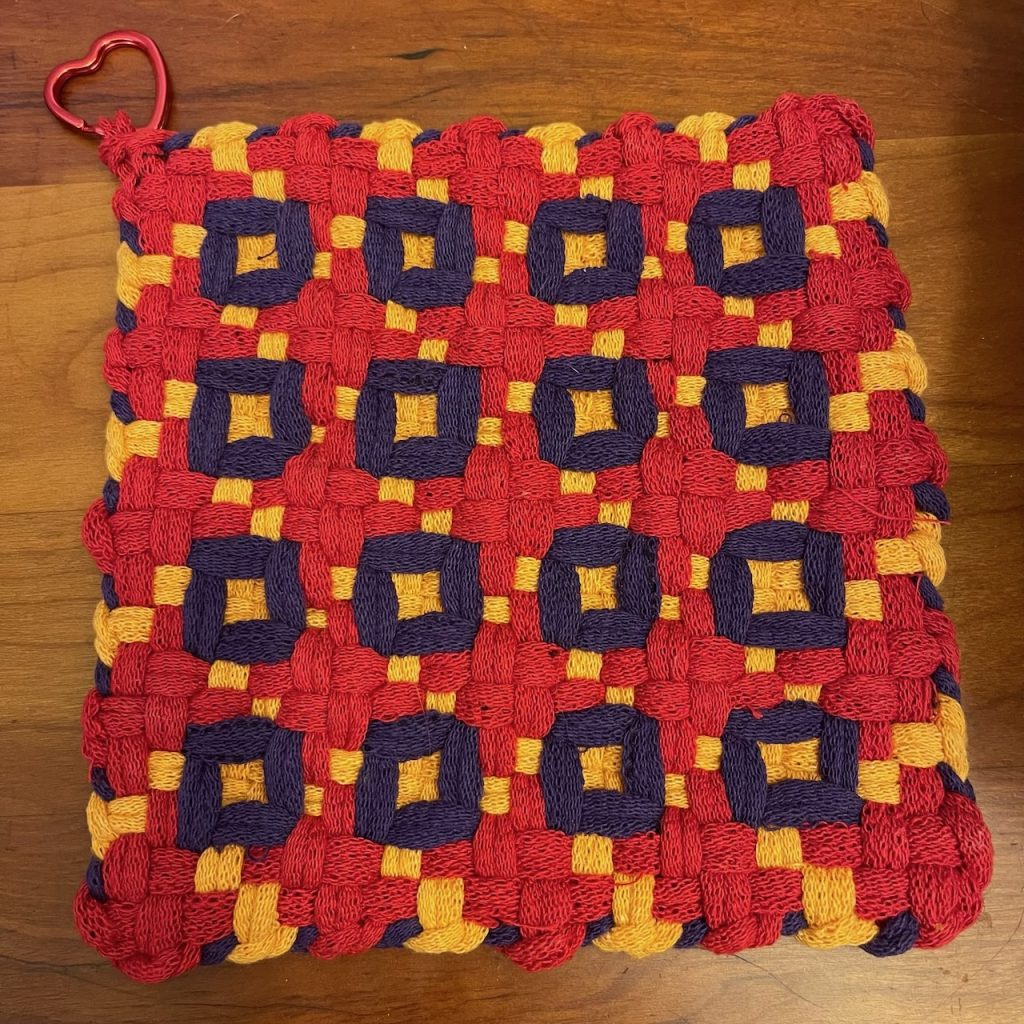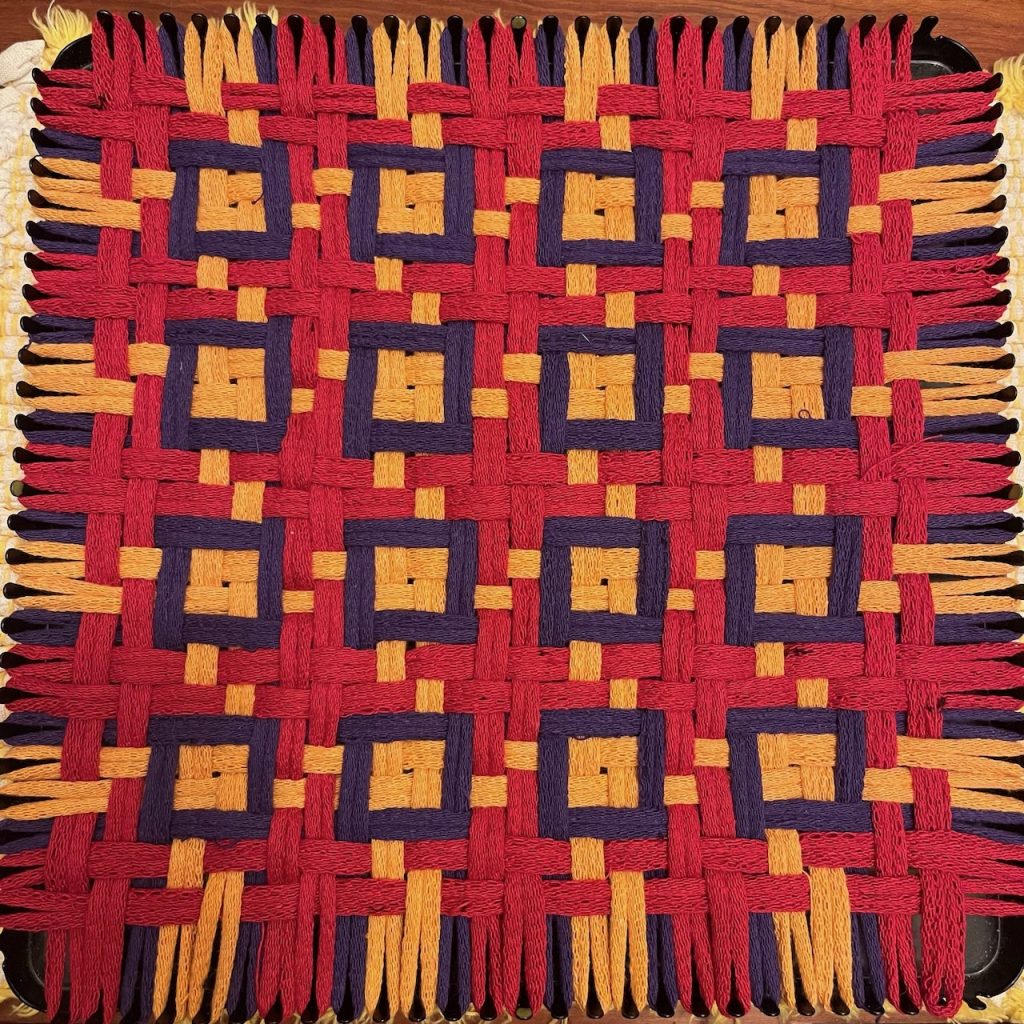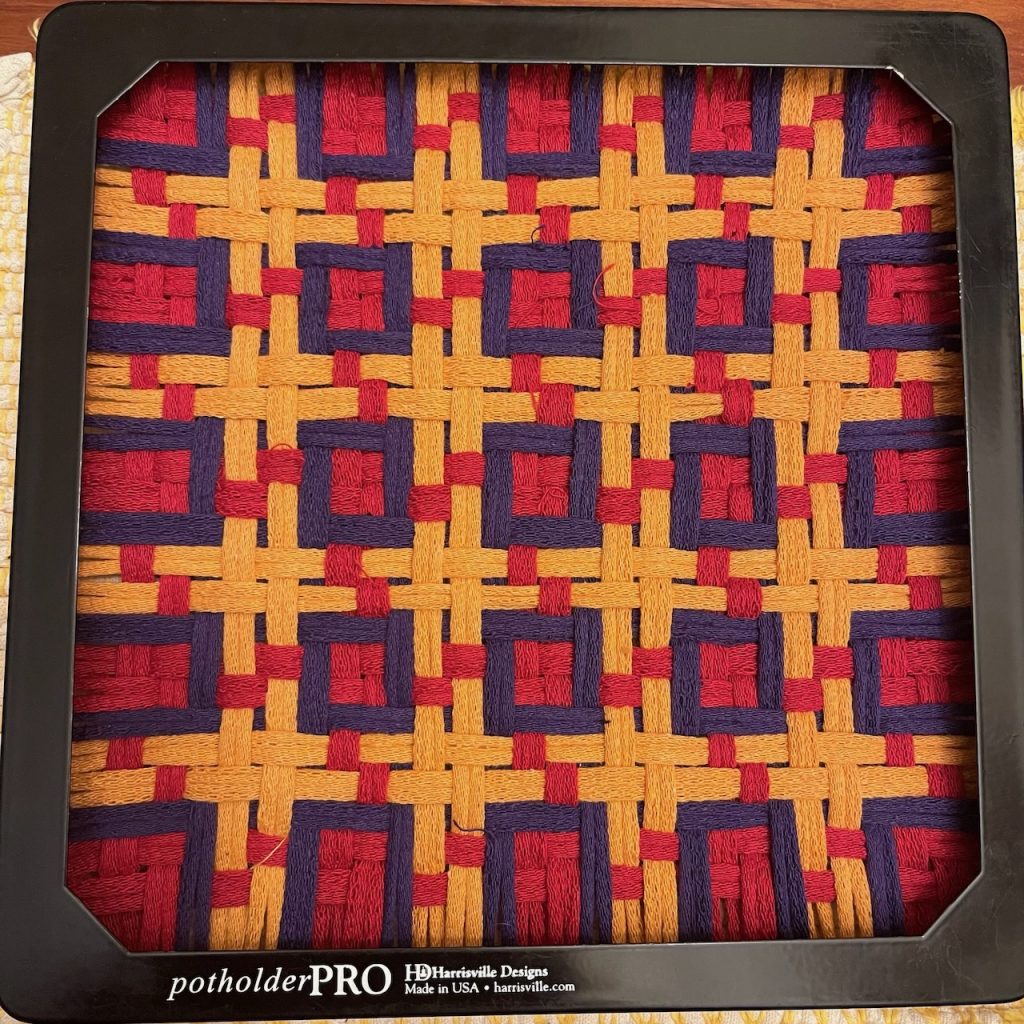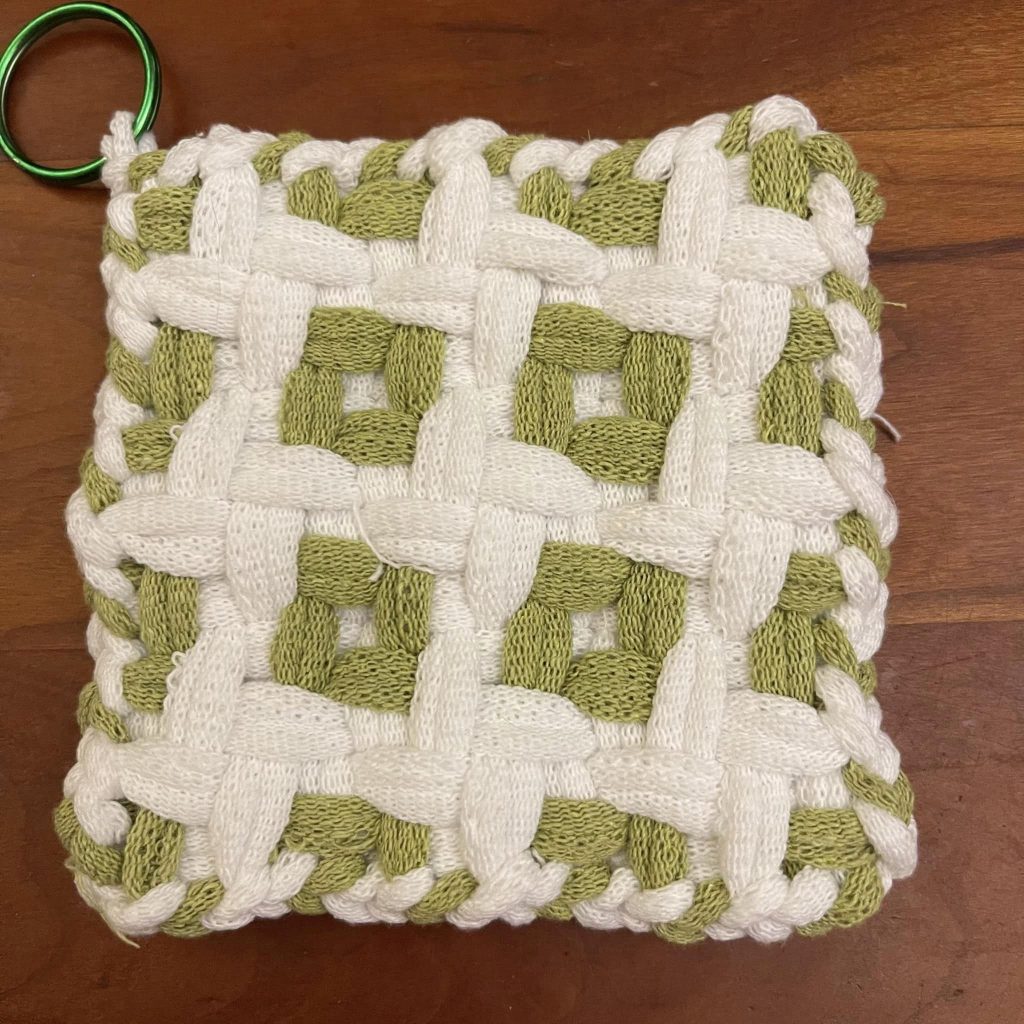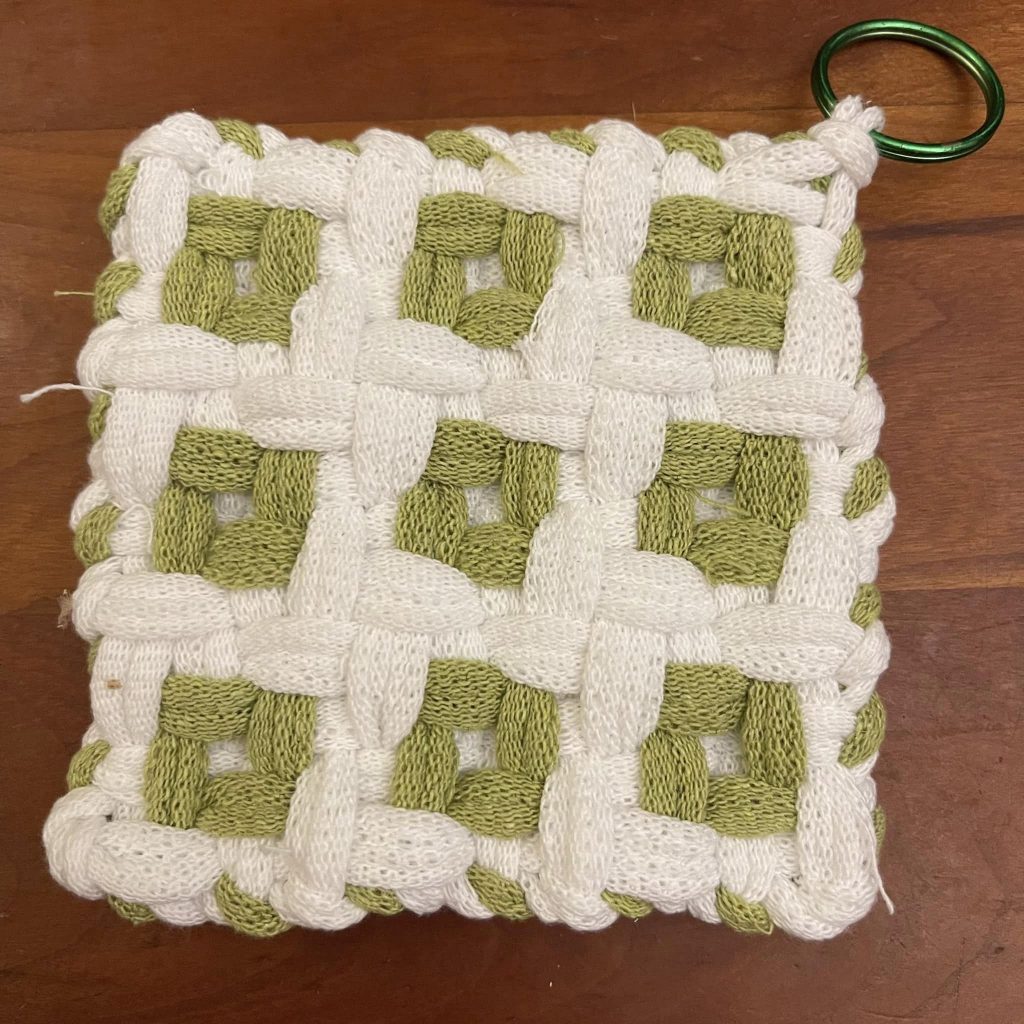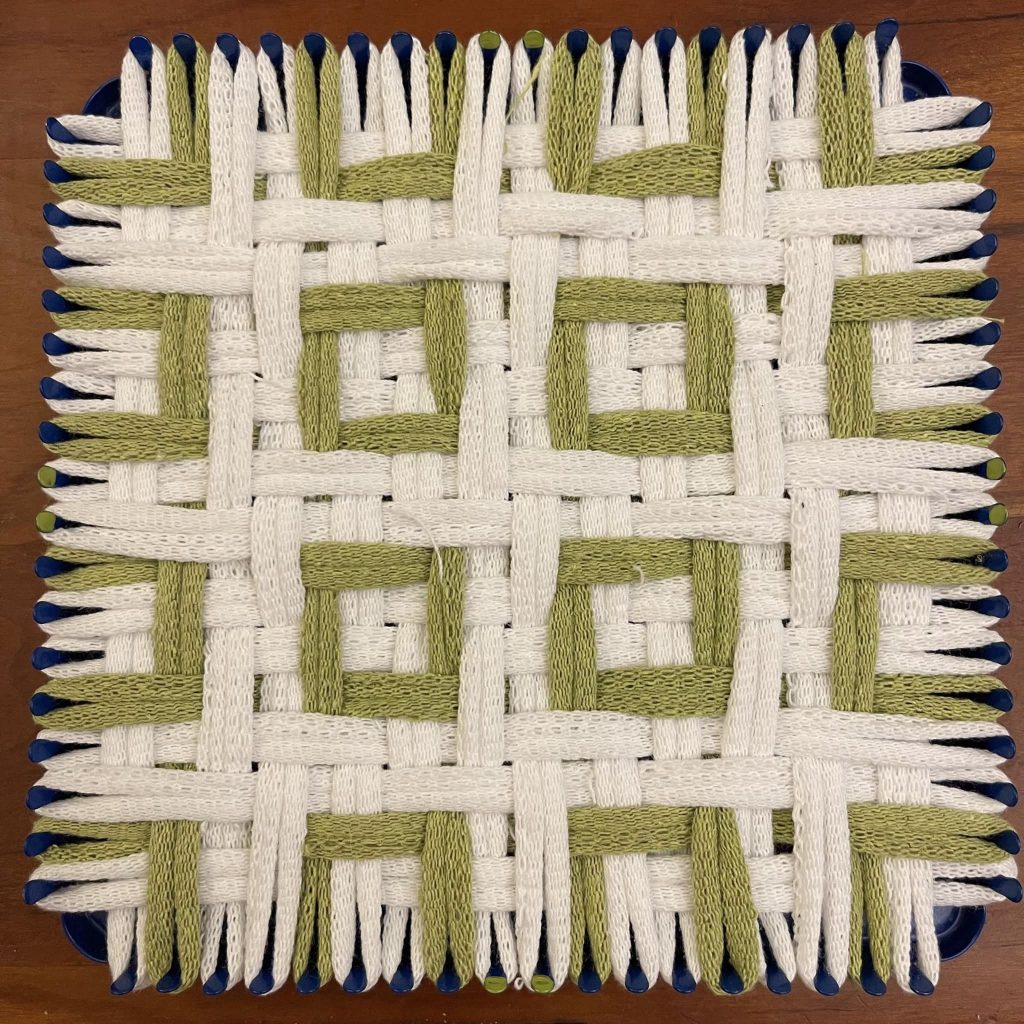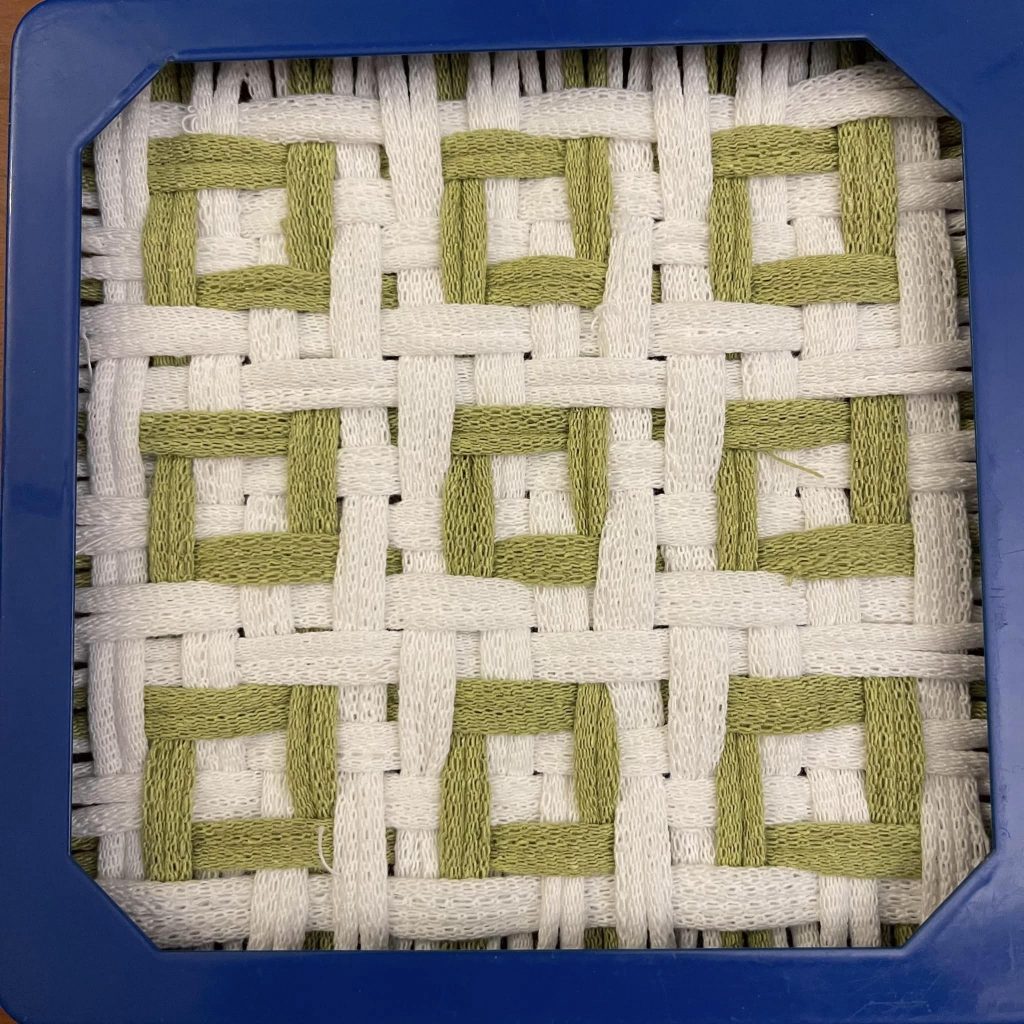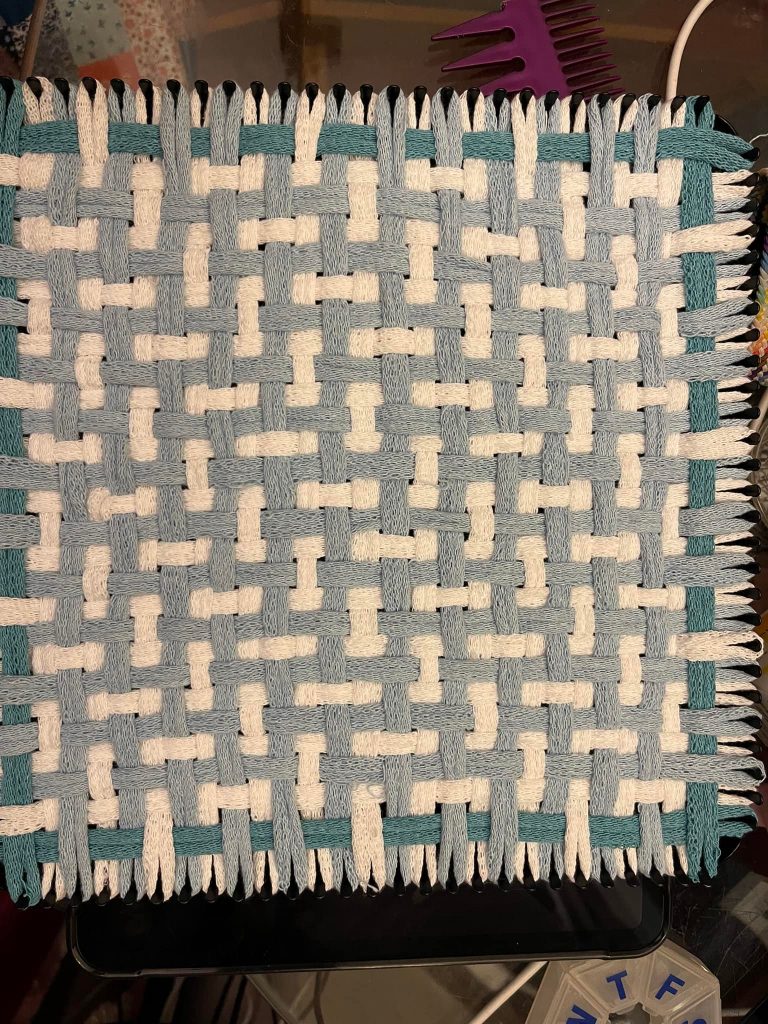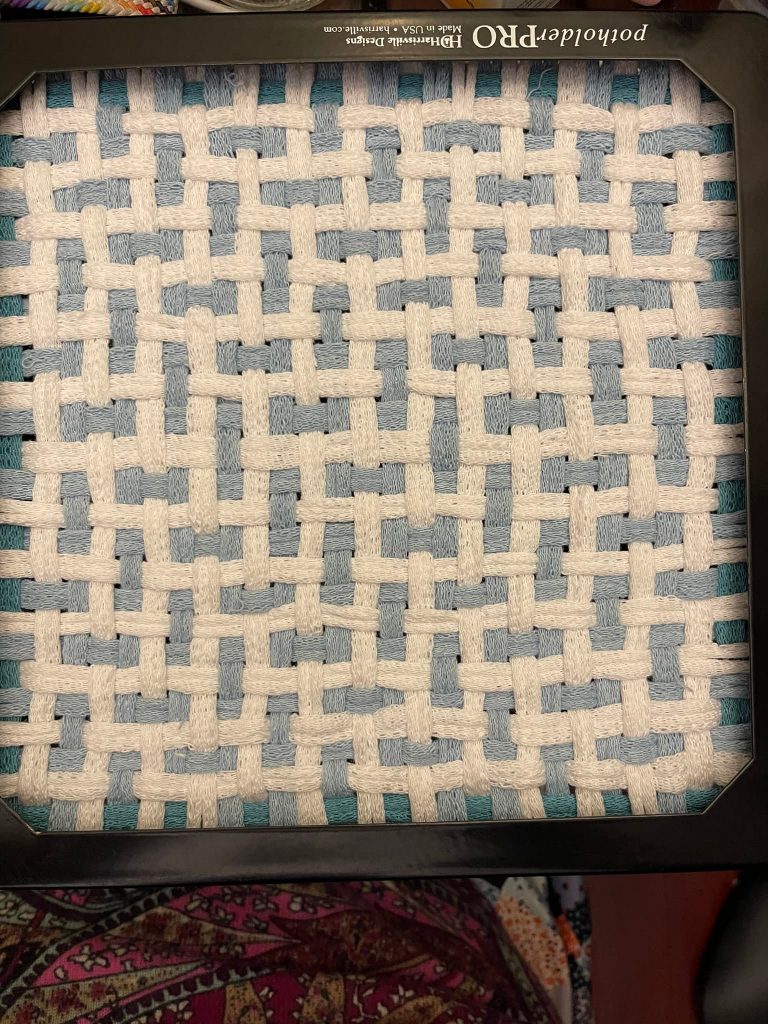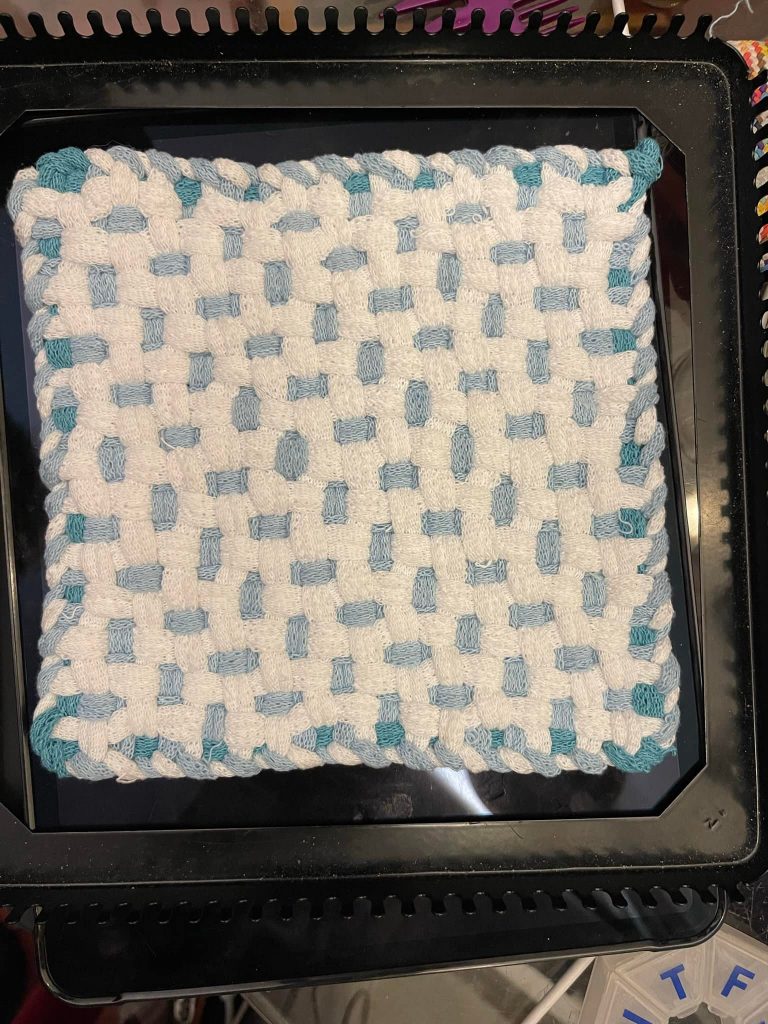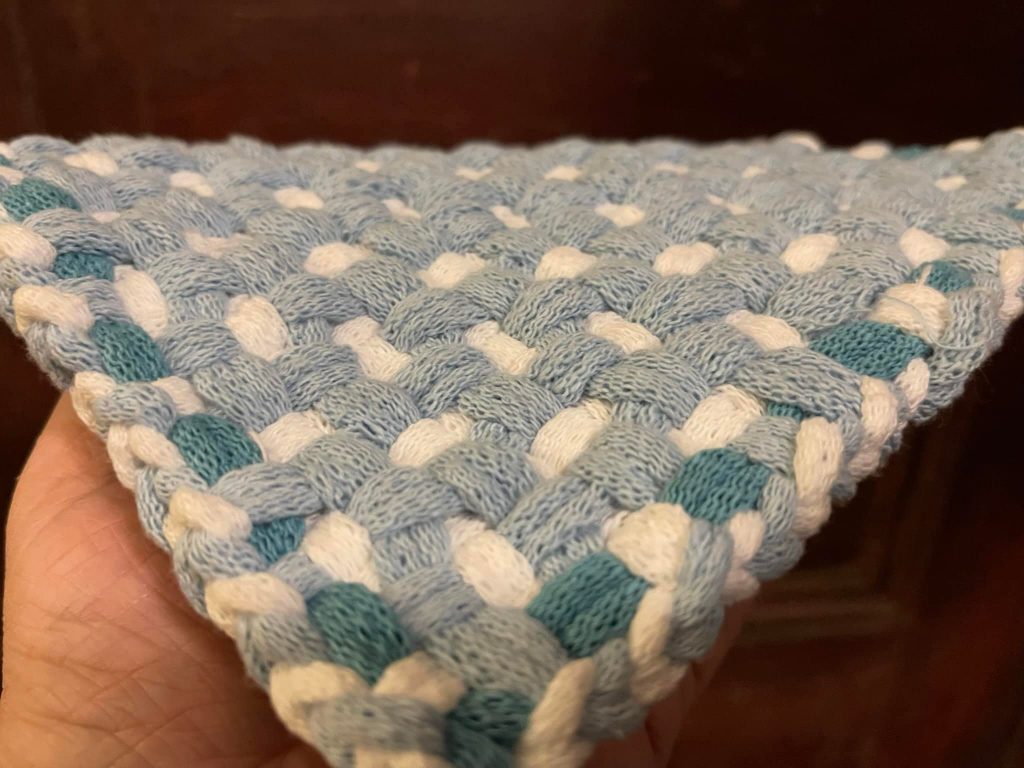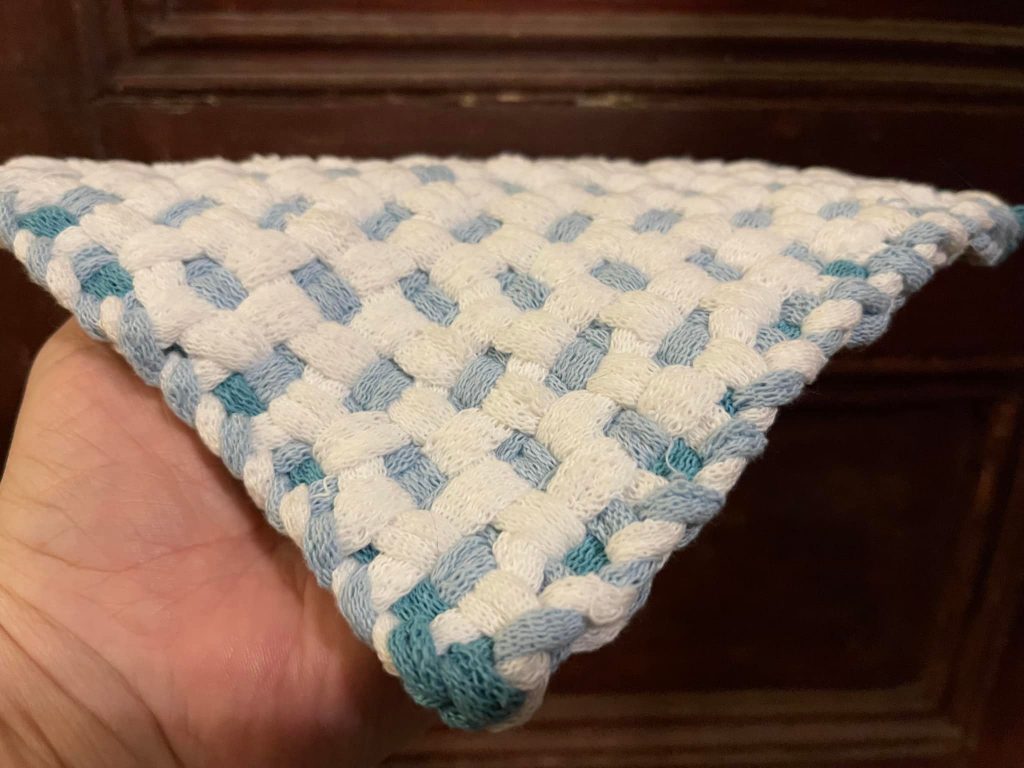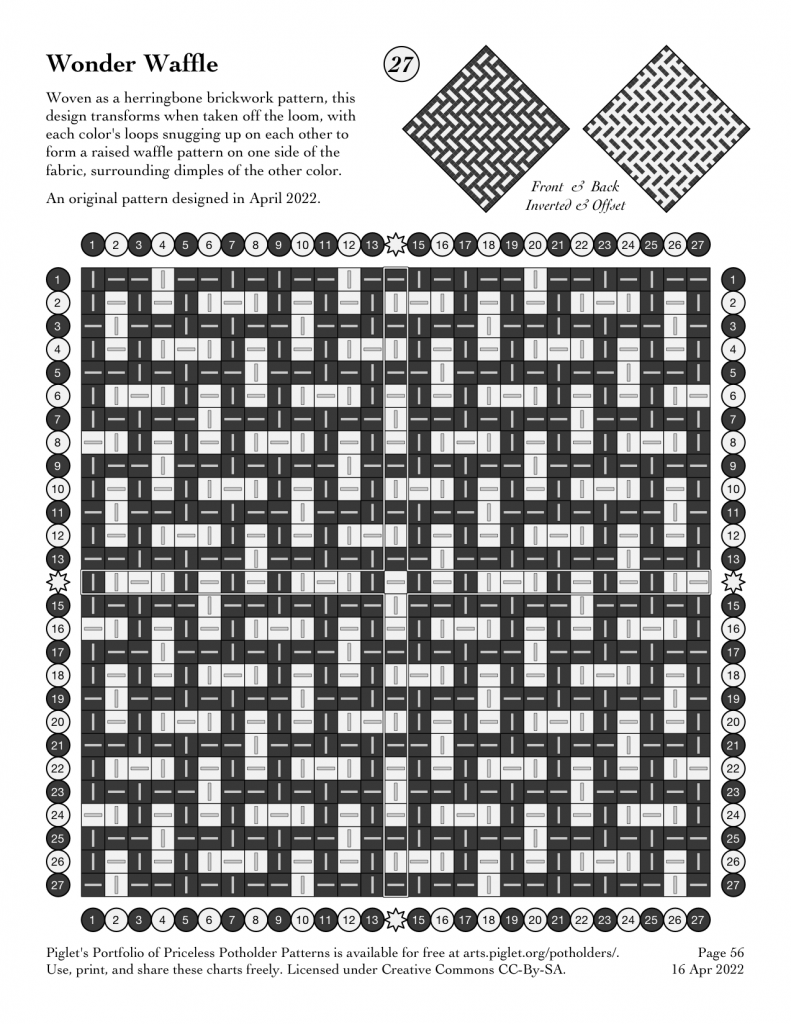Oops! When I charted the “moving boxes” pattern in late 2022, I accidentally used two slightly-different versions of the weave structure in the pro and traditional size charts.
Piglet pointed this out last week, and wove up an example of each to highlight the differences. They both turned out nicely, so we’ve separated them into two different patterns and you’ll now find separate charts for each on our website under the names “moving boxes” and “spinning boxes,” in both 26-peg and 18-peg charts, in two colors and in three colors.
Below are Piglet’s examples of “Tri-Color Moving Boxes” in white, lavender and leaf and “Tri-Color Spinning Boxes” in white, robin’s egg, and seaglass.
As you can see, they’re pretty similar, but the “spinning” version has longer floats in the “pinwheel” sections, so everything is slightly amped up — the boxes are a bit more twisted, the pinwheels rise up a bit more, and the whole potholder shrinks up a little bit more off the loom to become a bit thicker.
What a serendipitous mistake!










